Word Count: 2645
13 MINUTE READ
The amazing architecture of Uttar Pradesh shows an eclectic and diverse amalgamation of Buddhist, Hindu, Indo-Islamic, and Indo-European styles of architecture. It includes a variety of monuments, starting from Buddhist stupas to Viharas, Ancient Monasteries, Forts, Townships, Temples, Palaces, Ghats, Mosques, Memorials, and other community structures.
Uttar Pradesh has been revered for the continuous flow of India’s holiest river – the Ganges. The state grew up from the ancient Indo-Aryan civilization, from which a powerful stream of empires and kingdoms rose – Koshala, Kashi, Malla, Vatsa, Panchala, and Chedi Mahajanapadas. During the medieval period, there was the emergence of the Sharqi dynasty and the influence of Mughals. During the modern phase, Europeans were influenced deeply through the outpouring of their cultural developments. The essential features of style during this time were inherent decoration, exquisite inlay works, mihrabs, geometrical developments, arches, domes, minarets, and the design of kalasha in Hindu temples with detailed ornamental styles of scriptures written on the walls of the buildings.
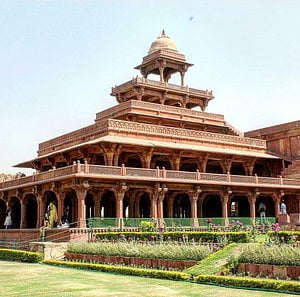
Uttar Pradesh is not only rich in its architecture and history but also embedded in mythology. There are several mentions of this state in Indian Puranas and other sacred literature of Indian religions. According to the studies, this land was a holy place for Hindus, but when Islamic rulers came during the 12th century, many temples were demolished, and in place for those mosques were erected.
The Various Phases of Architecture in Uttar Pradesh
The various phases of architecture in Uttar Pradesh are as follows –
Buddhist Architecture
Sarnath or Isipatana is one of the four pilgrimage sites for Buddhists, designed by Gautam Buddha. The other three sites are Kushinagar, Bodh Gaya, and Lumina. But Turks destroyed most of the ancient Buddhist structures and buildings at Sarnath, some of the major ruins left over are –
- Dhamek Stupa – It is an appealing 39m high and 28m in diameter.
- Dharmarajika Stupa – It is one of the few pre-Ashokan stupas left over, with only the foundations remaining.
- Ashoka pillar – Originally erected here and surmounted by the ‘Lion capital of Ashoka’, it was broken during Turk invasions. But the base of the pillar still stands at its original location.
- The famous Ashokan lion capital which miraculously survived its 45-foot drop to the ground has been housed in Sarnath archeological museum.
Many stupas were built during the Buddhist phase. Earlier they were elevated egg-like structures made out of mud, but subsequently, they were lined with bricks, a square harmika and a chattravalli (umbrella) were built on the top of them, and a staircase was also added to reach the top of the stupas.
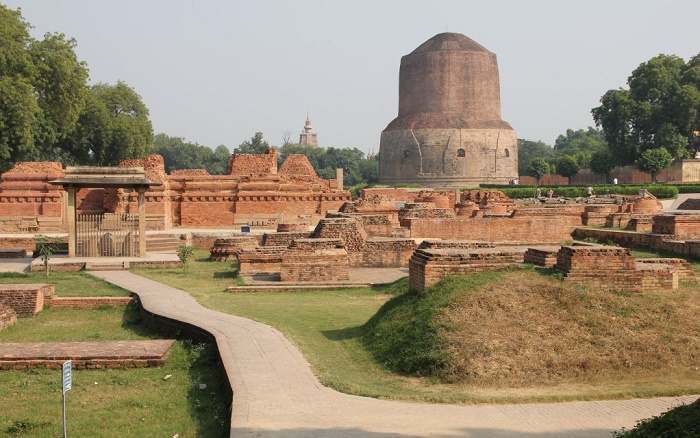
The Ashokan pillars are free-standing and are made out of chunar sandstones, which form an eminent landmark of Indian architecture. Famous for their lustrous polish, the Ashokan pillars consists of a tapering plain circular shaft with inscriptions of Ashoka. Based on an elaborately ornate abacus, a magnificent capital is placed atop the shaft. The abacus is decorated with a variety of motifs. The animal sculptures like of lion and the bull, enhance the beauty of these pillars.
Hindu Architecture
A lot of religious architectural styles were seen during the Gupta period. According to the studies, it is believed that the temples might have been built only a couple of centuries back before the Christian era began. An example of a plan is known to be from Mathura, which is about 1800 years old apsidal brick temple. Some of the notable temple examples belong to the 13th and 14th centuries from the city of Varanasi and Sonebhadra. Some of the famous Hindu temples are Kashi Vishwanath temple of Varanasi, Dashvatra temple of Deogarh, Ratneshwar Mahadev Mandir of Varanasi, Krishna Janma Bhumi in Mathura, etc.
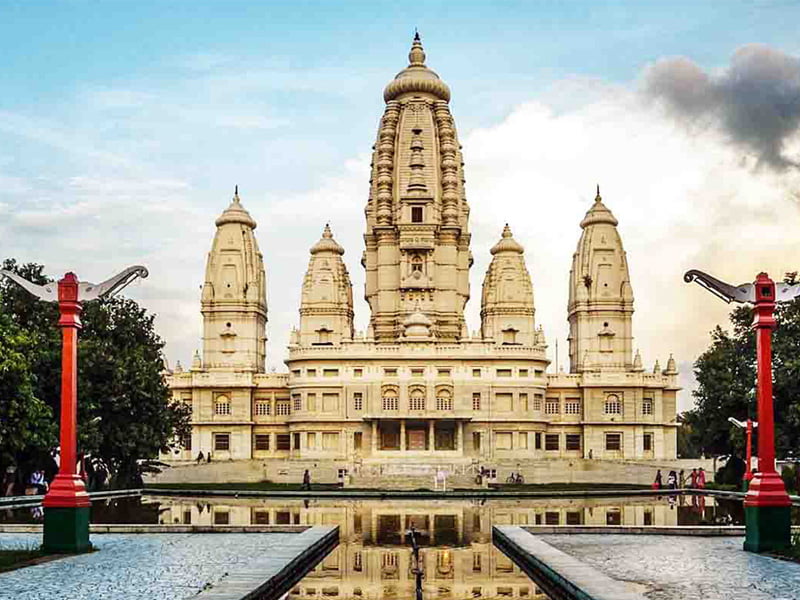
Indo – Islamic Architecture
Sultanates
The rise of the process of dynamic synthesis was seen during the sultanate architecture period, which led to a cultural reproaching and fusion of two diametrically opposite artistic traditions. While Islamic architecture tried to create its style in the architecture of Uttar Pradesh, it was also seen that Hindu architecture still influenced their structures. One such example is the Atala Masjid of Jaunpur, which is deeply influenced by the Hindu style, the reason for such influence is alleged to be since the masjid is situated on the site of Atala Devi temple, hence the name.
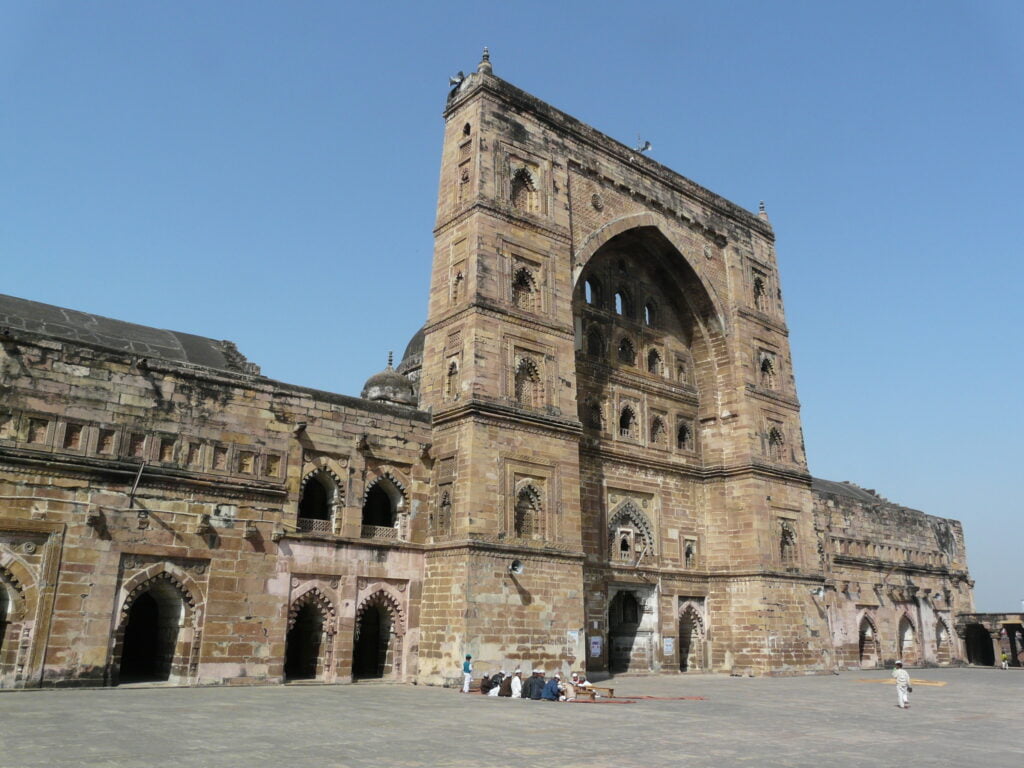
Mughal
Uttar Pradesh has 3 world heritage sites – Taj Mahal, Agra Fort, and Fatehpur Sikri, and all of them were built under the Mughal reign. The use of red sandstone and marbles were among the main features of the Islamic architecture style. The Allahabad fort, standing on the banks of the Yamuna River near the confluence with the Ganges, is the largest fort built by Mughal emperor Akbar.
Akbar tried to mix and blend the practical sciences of Hinduism with that Islamic architectural styles. He incorporated pillars, and beam construction technology like that of the Hindu style, and developed his unicity style of architecture. His style can be reflected in his tomb in Sikandra, and the city of Fatehpur Sikri.
The major elements used in Mughal architecture were flat or corbelled roofs, curved brackets, deep eaves, narrow columns, chhatris, and motifs such as bells and chains, toranas, etc, which were borrowed by the sultanate from pre-Turkish Hindu architecture.
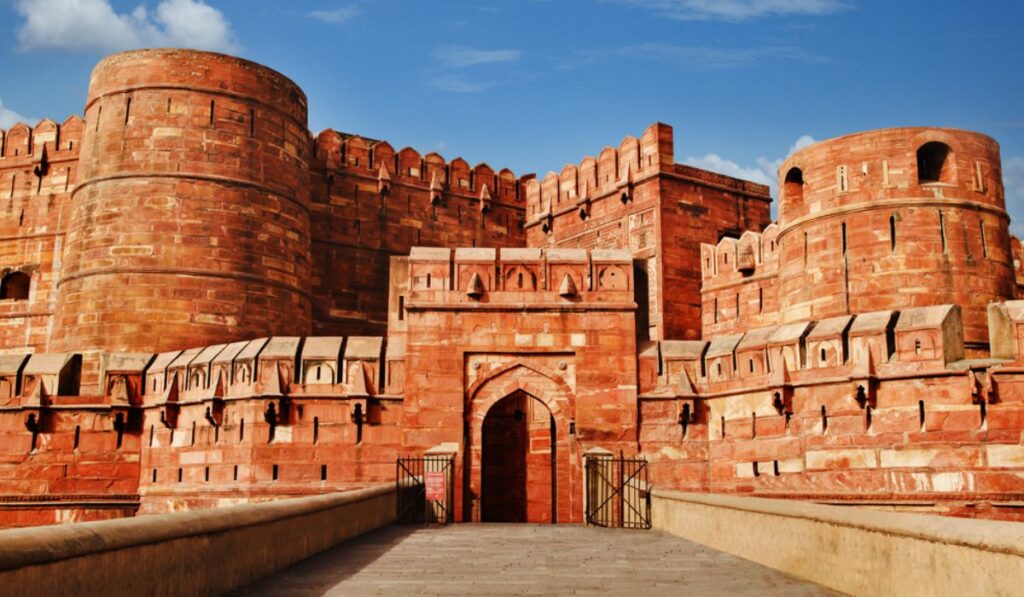
Oudh
The capital of Uttar Pradesh, Lucknow, has stored in it several beautiful monuments including Bara and Chota Imambara. It has also protected the destruction compiled of Oudh period British residents’ quarters, which are being restored.
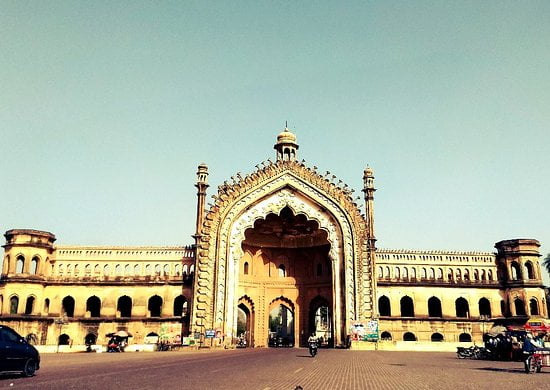
British Colonial Period
European Styles
The Allahabad Public Library constructed in the Scottish Baronial style, and All Saints Cathedral, Allahabad, and Kanpur Memorial Church constructed in Gothic Revival style are examples of European architecture style buildings in Uttar Pradesh.
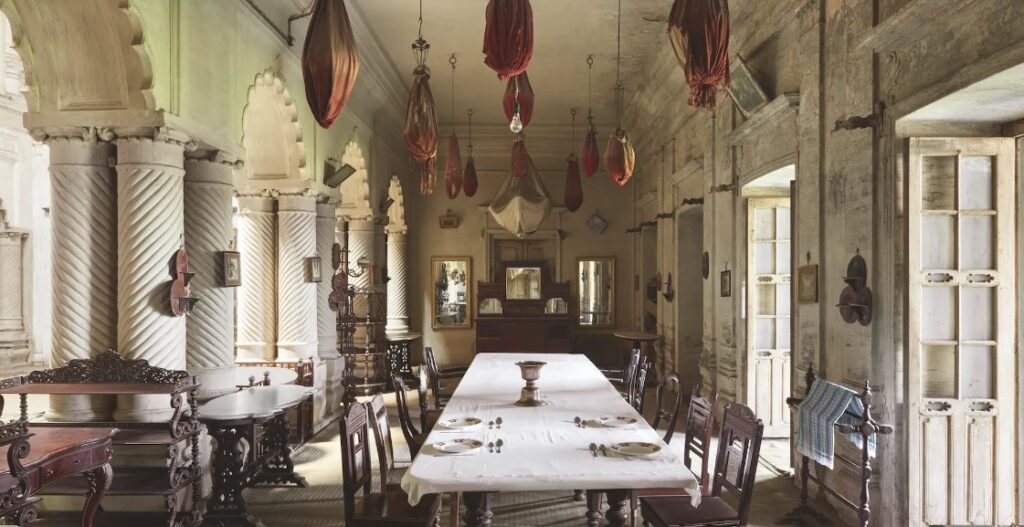
Indo – Saracenic Architecture
Indo- Saracenic style can be seen in the Lucknow Charbagh railway station and Kanpur central railway station.
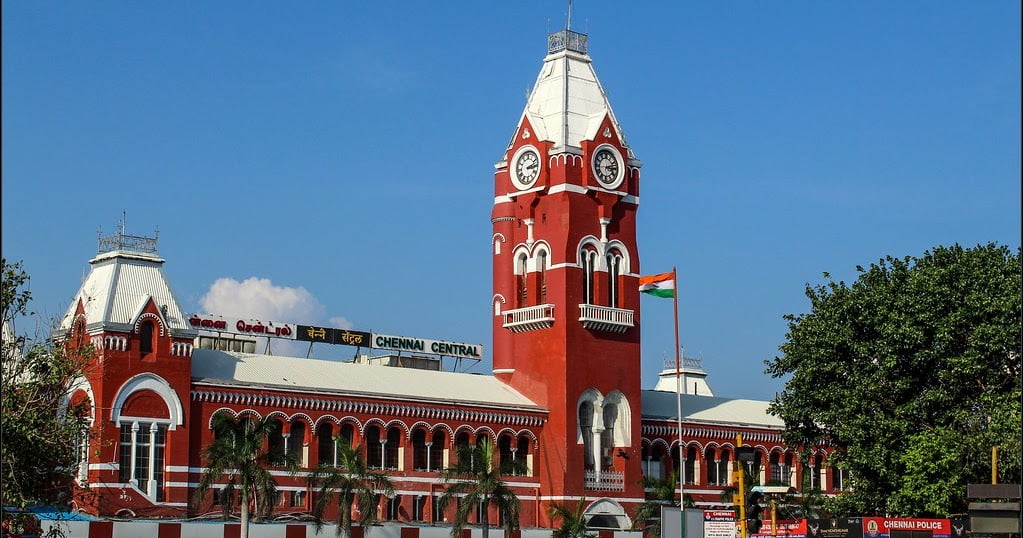
Some Famous Monuments of Uttar Pradesh
Dhamekh Stupa of Sarnath
The Dhamekh stupa is believed to date from 500 C.E. and emperor Ashoka renovated it in the year 249 B.C.E. Studies believe it to be the most religious place for Buddhists and many devotees flock here all around the year. An inscription dated 1026 AD suggests that the aboriginal name of the stupa was Dharma Chakra Stupa. There is a small box placed at the heart and center of the stupa, which may contain relics or artifacts of Buddha or some enlightened Buddhist monks, or the thing that was used by them, or some precious stones or coins.
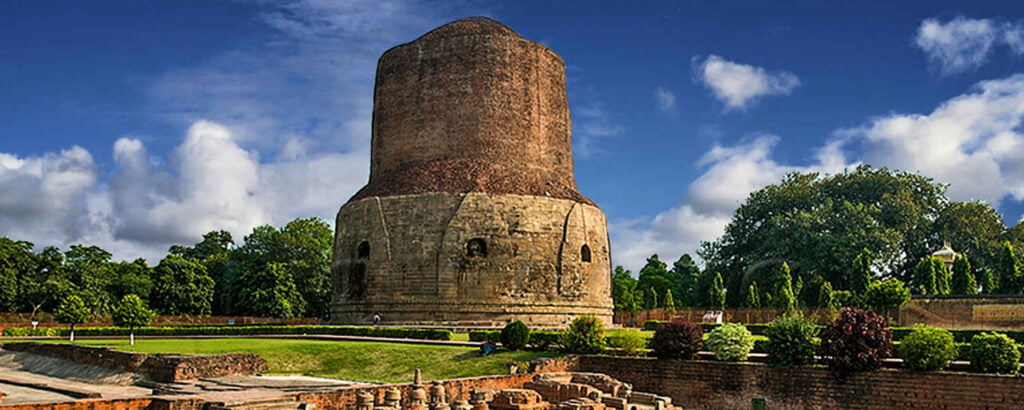
Bhitargoan Temple, Kanpur
The Bhitargoan temple is an exceptional example of the magnificence of the artists India nurtured during its ancient times. The temple has a structure that shows ancient Indian art on its walls and forms.
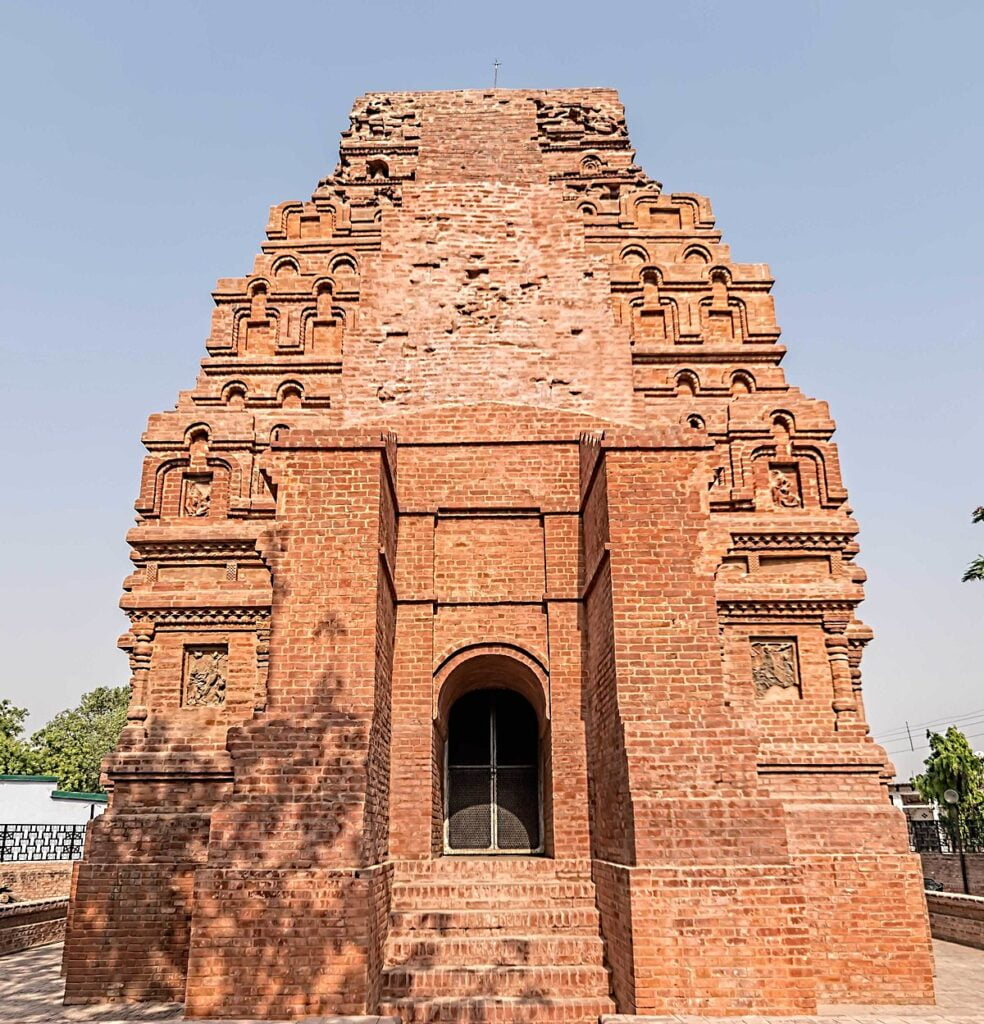
Dashavatara Temple, Deogarh
The Dashavatara Temple or the Vishnu temple is situated in Deogarh in Uttar Pradesh constructed in 500 AD. It is among the earliest Hindu stone temple still surviving today. It was built out of brick and stones consisting of a single cubical sanctum that sheltered the image within. It was built in the Gupta period and it shows intricate ornate and beauty of the Gupta style of architecture. It is a good example to study about Gupta style of architecture, sculptures, and arts.
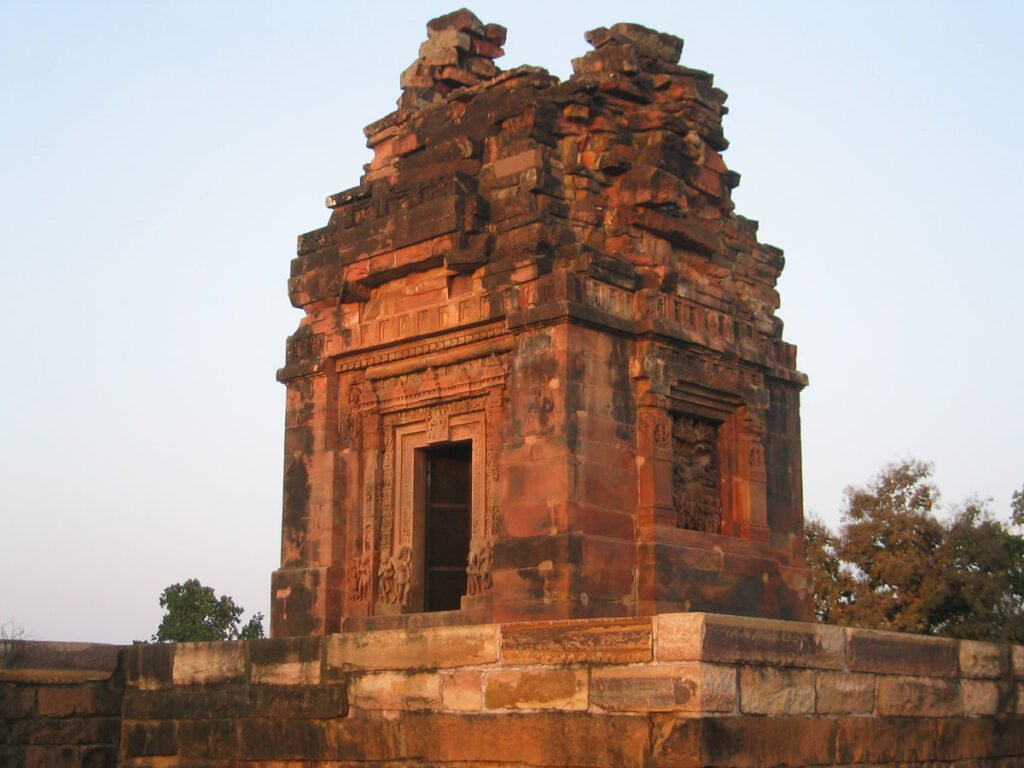
Fatehpur Sikri
Built by Mughal emperor Akbar, the Fatehpur Sikri is surrounded by walls on its three sides and a lake on the fourth. Its architecture was based on Mughal and Indian styles (Hindu and Jain architecture styles). It houses many structures including mosques, palaces, tombs, etc. Some of them are – Buland Darwaza, Jama Masjid, Badat Khana, Jamat Khana, Tomb of Salim Chisti, Diwan – I – Khas, Diwan – I – Aam, Jodha Bai Palace (also known as Harka Bai Palace), Panch Mahal, Birbal’s house, Anup Talao, Hujra – I Anup Talao, Naubat Khana, Pachisi court, Hiran Minar.

Agra Fort
The Agra Fort, also known as Red Fort since it is built of red sandstone, is located on the banks of river Yamuna in Agra, Uttar Pradesh. Within the fort, there are Mughal architectural marvels including – Moti Masjid, Pearl Mosque, Diwan – e – Aam, Diwan – e – Khas, and Jahangir Palace. It was initially built by Akbar in 1565, as a military establishment but his successors made several additions to the main structure of the fort. It is semi-circular in shape and is flattened in the east with a long, nearly straight wall facing the river.

Taj Mahal
The Mughal architecture reached its apex during the reign of Shah Jahan. With inspiration from the verses of the imperial goldsmith and poet, Bibadal Khan, the Taj Mahal was conceived as a replica of the house of Mumtaz in Paradise, on earth. Red sandstone and marbles contributed to the construction of one of the seven wonders of the world. It evoked a more perfect, stylized, and permanent garden of paradise. It was also an instrument of propagation of Shah Jahan’s chroniclers who portrayed him as an ‘Erect cypress of the garden of Caliphate’ and frequently used plant metaphors to praise his good governance, person, family, and court.
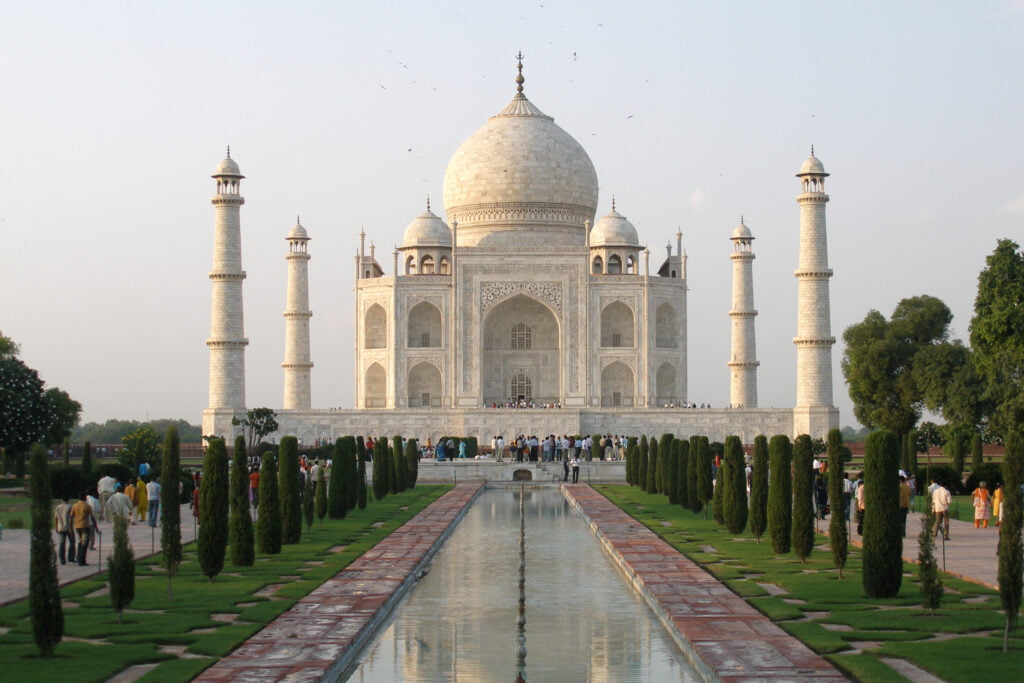
Allahabad Public Library
The Allahabad Public Library is also known as Thornhill Mayne Memorial. It is located at Alfred Park in Allahabad (presently Prayagraj), built-in 1864. It is the largest library in Uttar Pradesh. The design was made by Richard Roskell Bayne as an example of Scottish Baronial architecture. The library has turrets and sharp pillars of granite and sandstone. It shows structural polychromy with arcaded cloisters and lofty towers.

All Saints Cathedral, Allahabad
The colonial structure of All Saints Cathedral was built in the 19th century, designed by Sir William Emerson in 1870 in Gothic architecture style. The stained-glass panels and the intricate marble works make the structure more attractive. This cathedral is also known as ‘Patthar Girja’.
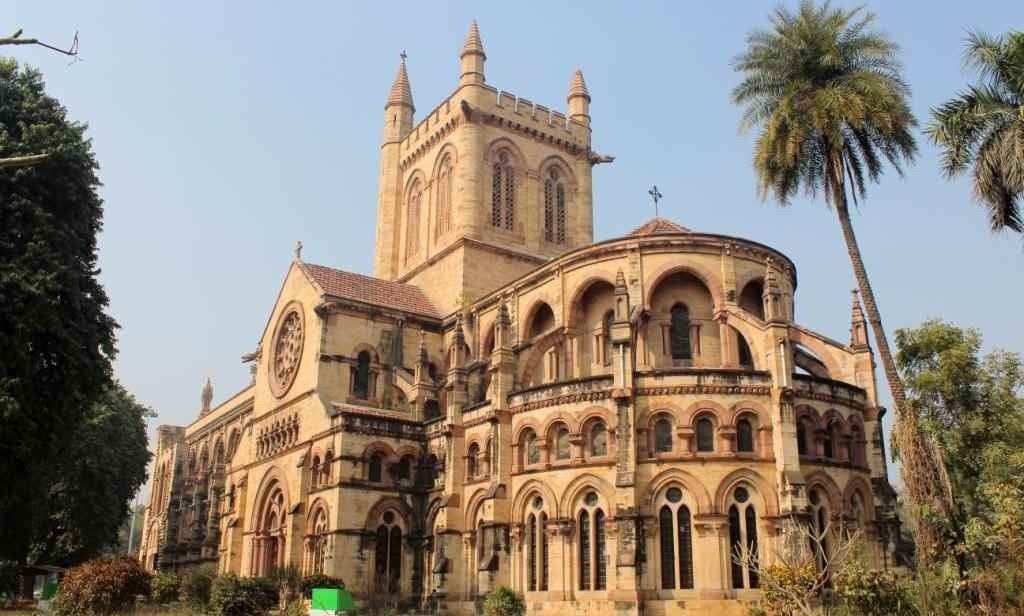
Kanpur Memorial Church
The Kanpur Memorial Church is also known as All Souls Cathedral. It was built in Lombardic Gothic style in 1875 to honor those British lives that were lost during the Kanpur siege of 1857. Red bricks were used to build this structure.
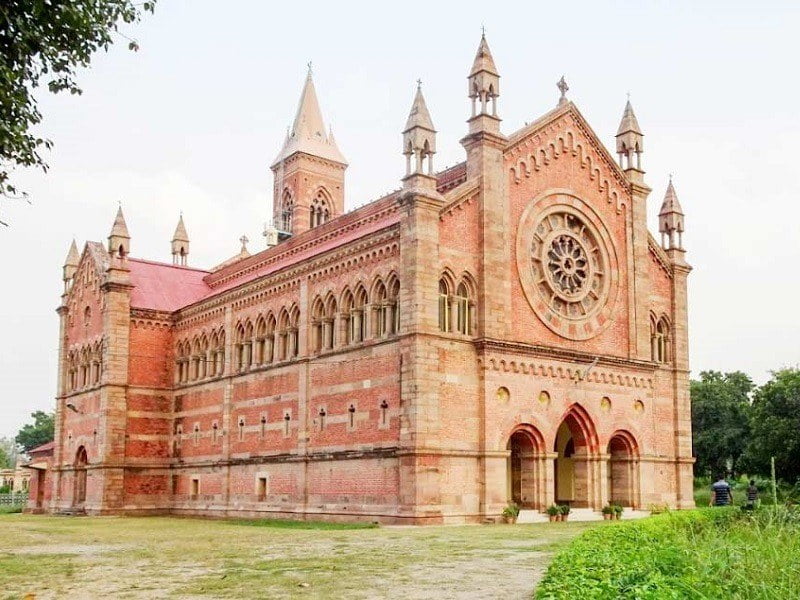
Some Cities of Historical and Architectural Importance
Varanasi
Varanasi (or Banaras) sits in the central area of the Ganges valley in Uttar Pradesh. It is evident in its rich cultural landscape and is an eclectic mix of tangible (ghats, temples, mosques, and museums) and intangible (natural landscapes, cultural heritage like art, music, crafts, dance) heritages.
Ghats and the Ganga Aarti are the main attractions of the city. Ghats are the riverfront steps that lead into the river. There are around 88 ghats in Varanasi. There are two essential landmarks called the Manikarnika Ghat and Harish Chandra Ghat which are used to cremate dead bodies. Ganga Aarti is witnessed on Dashashwamedh Ghat daily at dusk and is filled with tourists, monks, men, women, and children celebrating the water. It symbolizes that Varanasi is not only about cremation and death, it is also about celebrating the colorful journey of life.
Varanasi shows a combination of Rajput, Hindu, and Mughal architecture.
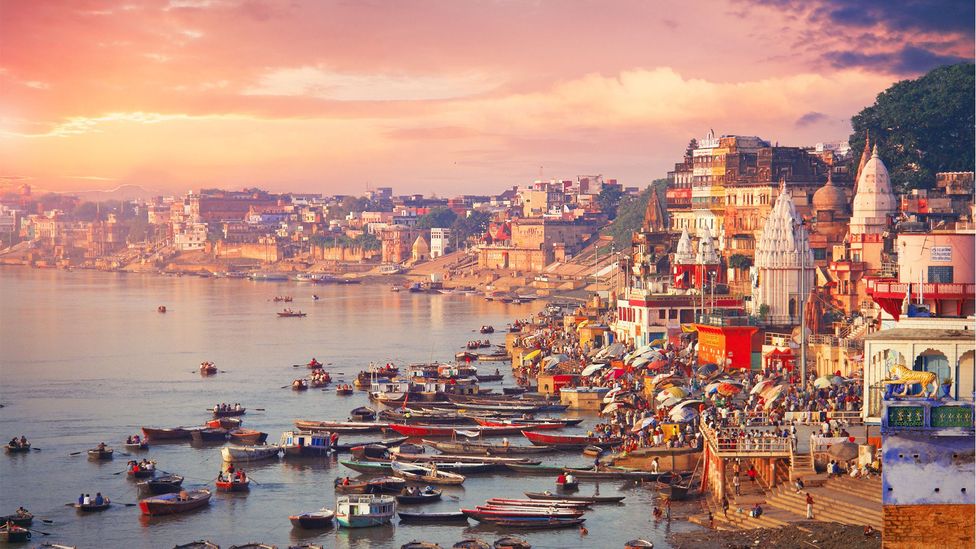
Some of the famous monuments of Varanasi are –
The Tilted Temple
The Ratneshwar Mahadev Mandir (or the Tilted Temple), at Manikarnika Ghat, is the most photographed temple in Varanasi. The temple is built in the classical style of architecture with the Nagara style of shikhara. The temple is leaning by 9° towards the northwest side. The garbagriha is submerged under water for most of the year, except for the few summer months.
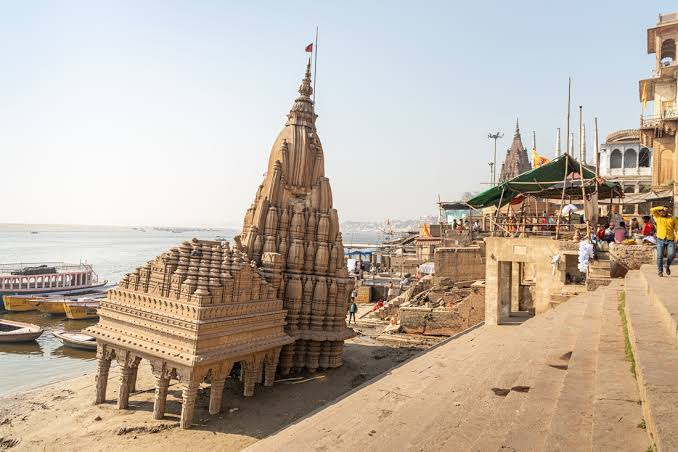
Kashi Vishwanath Temple
Among the estimated 23000 temples of Varanasi, Kashi Vishwanath Temple is the most famous one having significant historical and religious importance. It is one of the 12 Jyotirlingas in India. It has been destroyed and rebuilt several times, the most recent one was built in the 18th century. The temple includes a series of smaller shrines while the main temple sits in the middle which is a quadrangle in the plan.
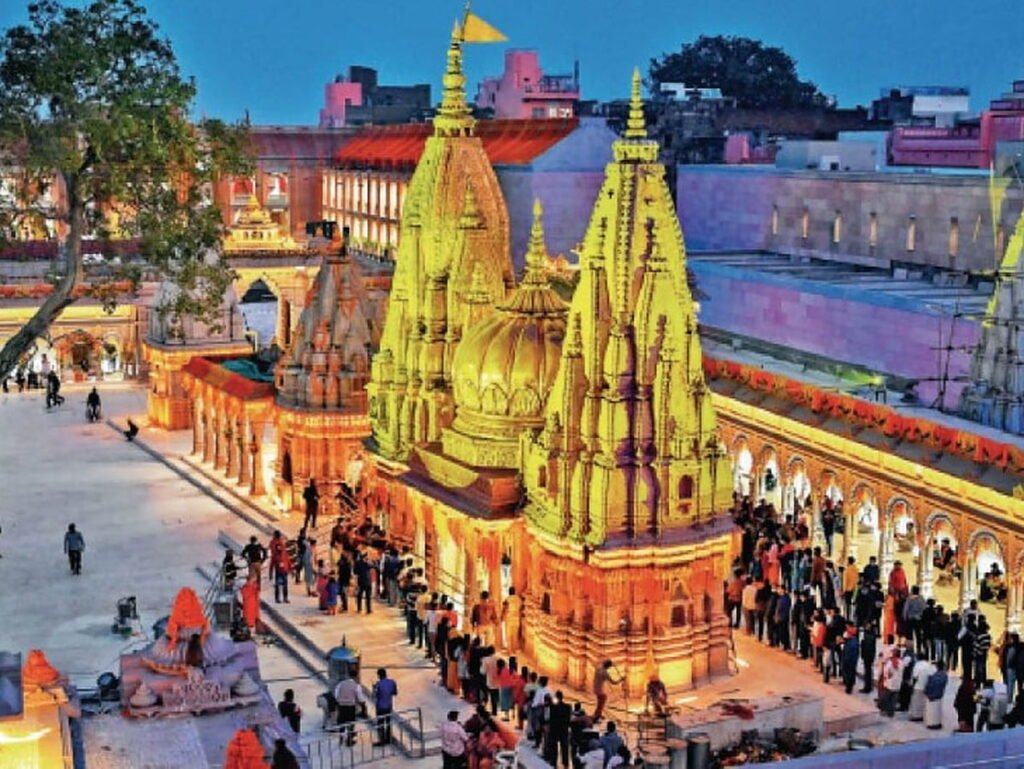
Ramnagar Fort
The Ramnagar Fort was constructed in the 18th century. It is a cream-colored chunar sandstone fort that was commissioned by Raja Balwant Singh. This fort is a typical illustration of Mughal architecture with carved balconies, open courtyards, and scenic pavilions. Today, the fort is cited as an eccentric museum.
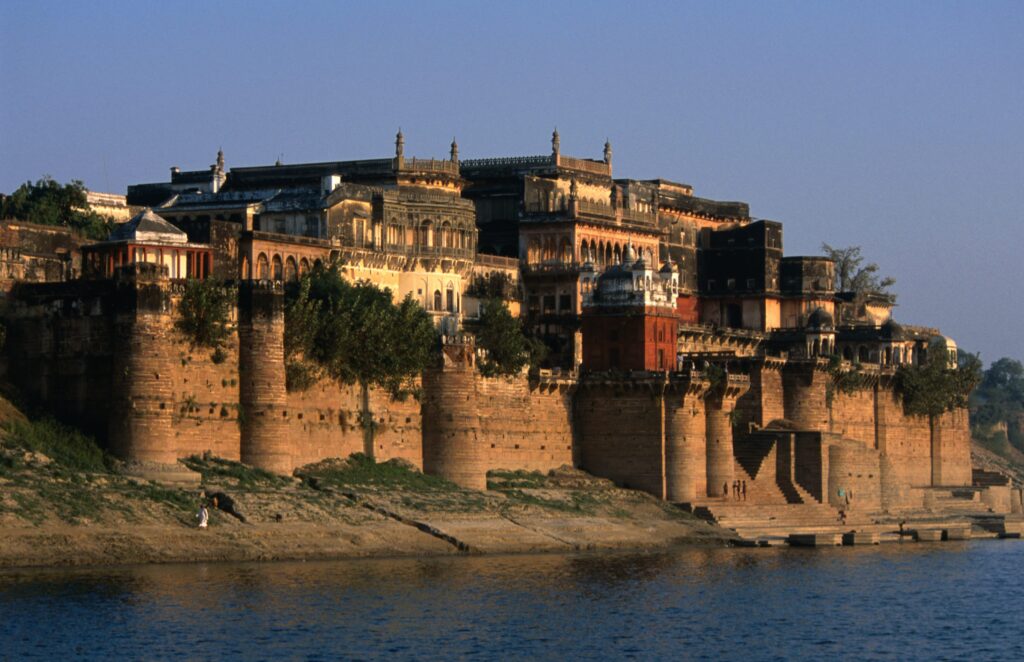
Jantar Mantar
Maharaja Sawai Jai Singh II of Jaipur built five astronomical observatories in the Northern part of India between 1724 and 1730. The Jantar Mantar includes a unique equatorial sundial that is functional to date. Built to measure local time, altitude, declination of the sun, stars, and planets and determine eclipse.
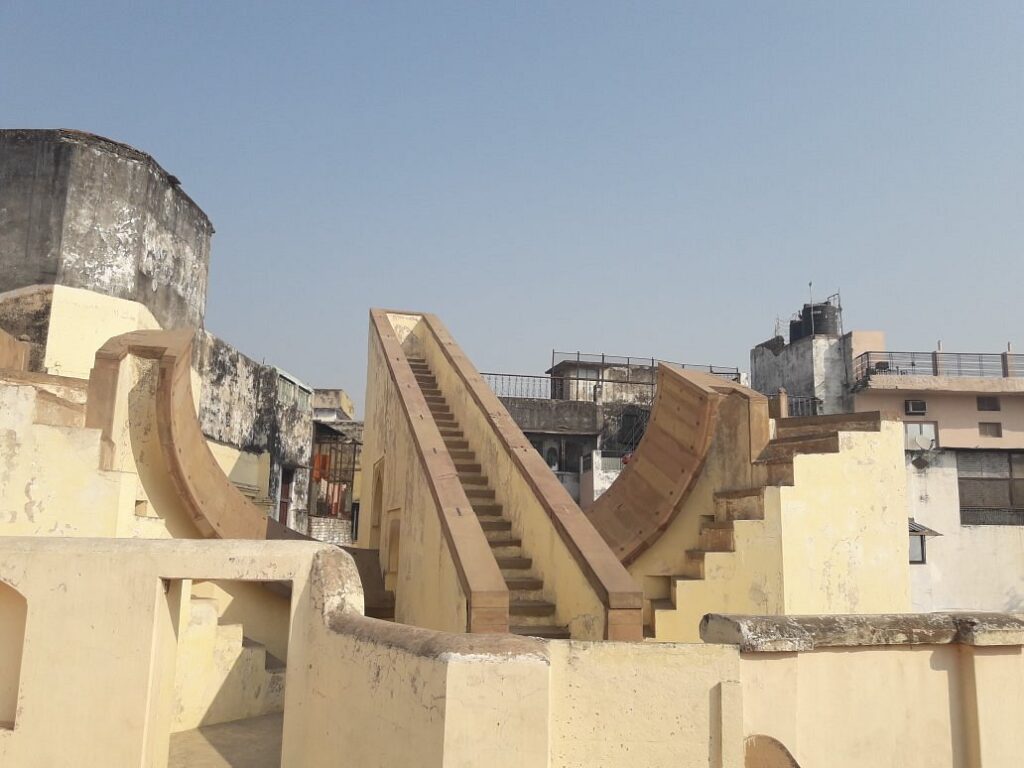
Mosques
There are 15 significant mosques in the city. History is related to the creation of each of the mosques. And two of them stand out due to their controversial existence. Gyanvapi mosque is standing on the original site of the destroyed Kashi Vishwanath temple, as per the controversies. Another controversy is with the Alamgiri Mosque, which is built in the 17th century by Aurangzeb over the ruins of another Hindu temple. Both of them are architecturally a blend of Islamic and Hindu architecture.
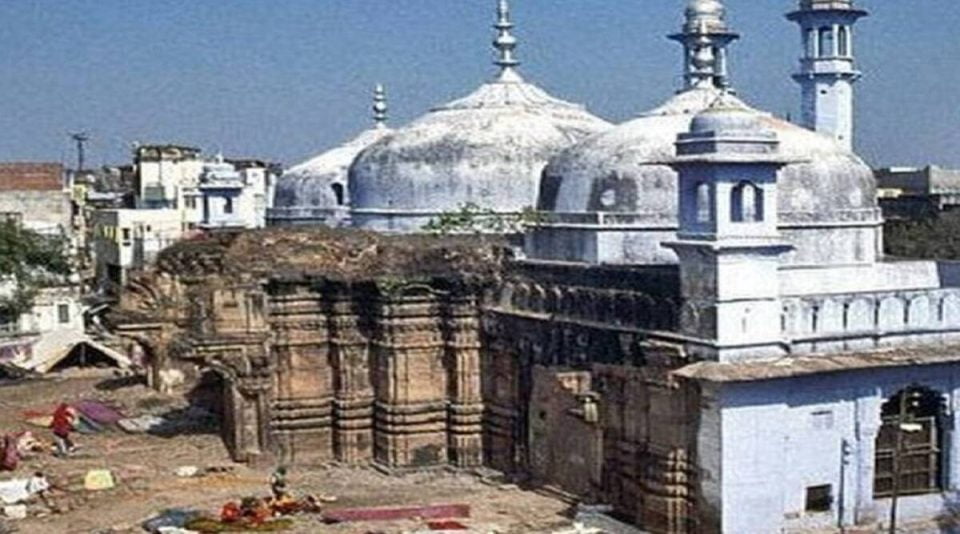
Meerut
The city of Meerut is situated on the fertile banks of the Ganges and Yamuna. The city is in the western part of Uttar Pradesh and has a very rich history which is reflected as an amalgamation of culture, traditions, and artforms. Meerut being the ‘sports capital of India’, it is also the biggest maker of athletic gear and musical instruments. It is also known for its wooden specialties and crafts.
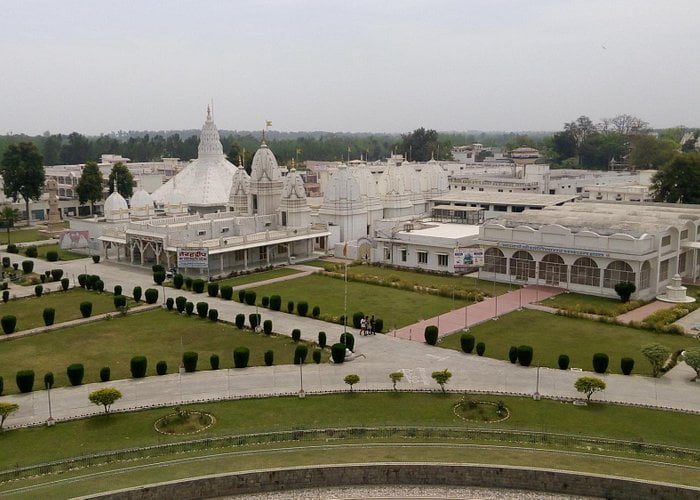
Some of the famous monuments of Meerut are –
Augarnath Temple
The Augarnath temple is dedicated to Lord Shiva, and the shivling is believed to have occurred naturally. During the revolt of 1857, the warriors started their journey from this temple as it was a religious as well as peaceful place.
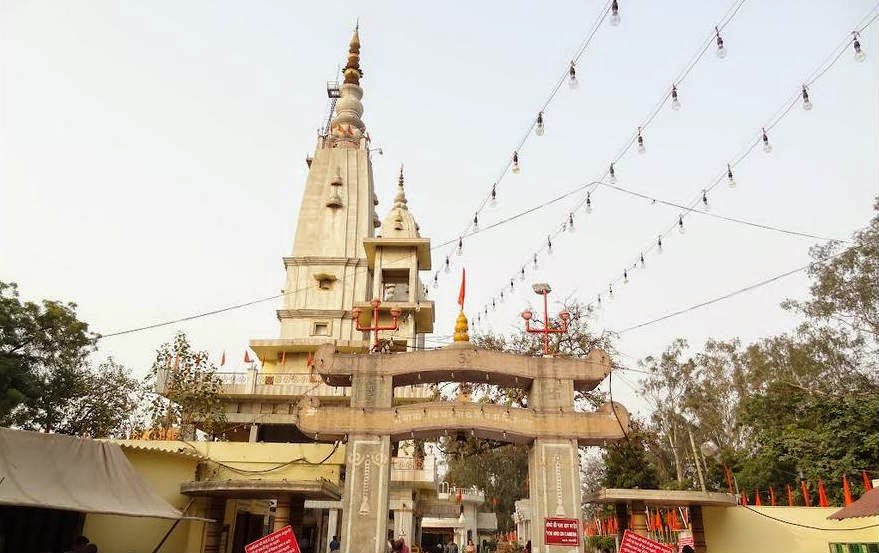
Suraj Kund
Suraj Kund lake was originally constructed in 1714 by Lawar Jawahar Lal, a rich dealer, and was known as a ‘monkey tank’ by the British. As per Hindu mythology, Karna has sacrificed his ‘kawach’ to Lord Indra at the territory of this kund. There are several little sanctuaries, temples, sati columns here.
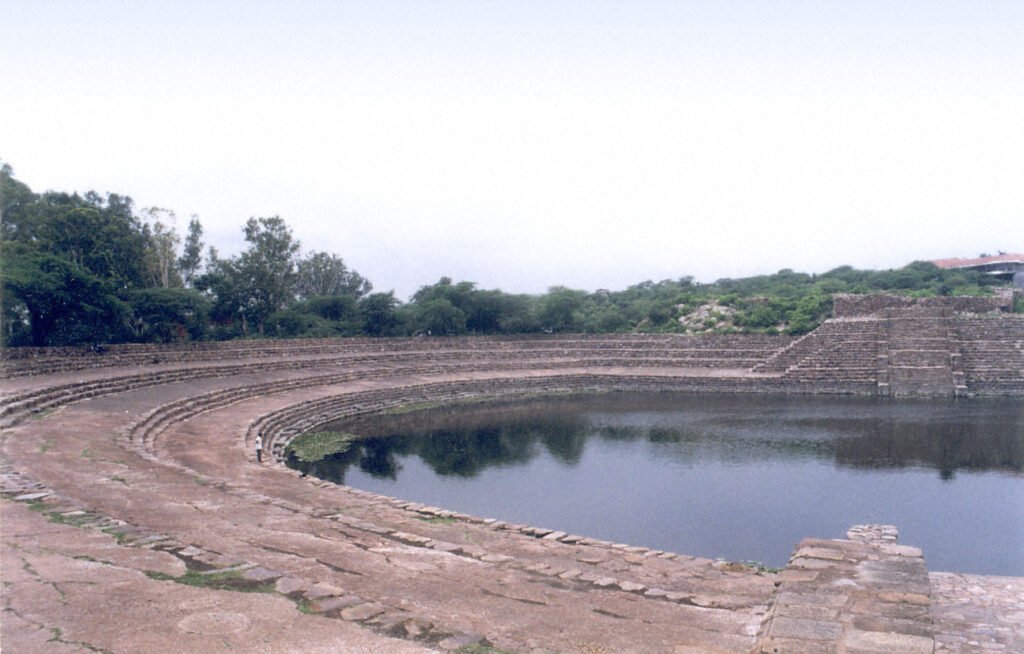
Gandhi Bagh
The Gandhi Bagh is commonly called the ‘Company Garden’. Inside its premise, it includes lavish greenery with a wide range of vegetation. There is also a musical fountain that runs each night here.
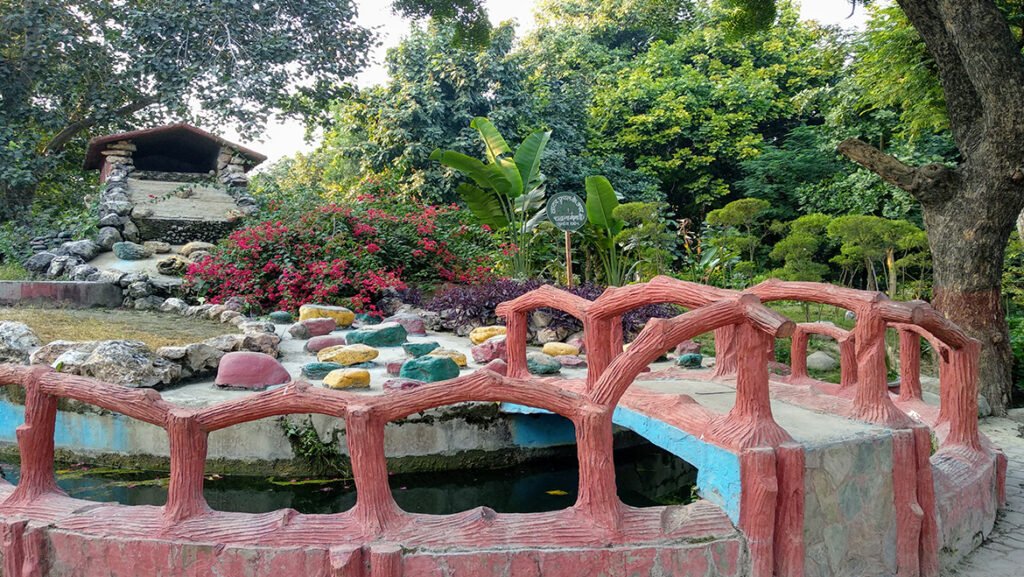
Havelis
The Havelis in Meerut are like the Havelis of Old Delhi. Most of them have small wooden entrances, the huge ramp from the street leads to the grand entrance of Haveli. Above the entrance, of the Havelis, there are small shield-shaped devices called the torans, made up of wood and silver.
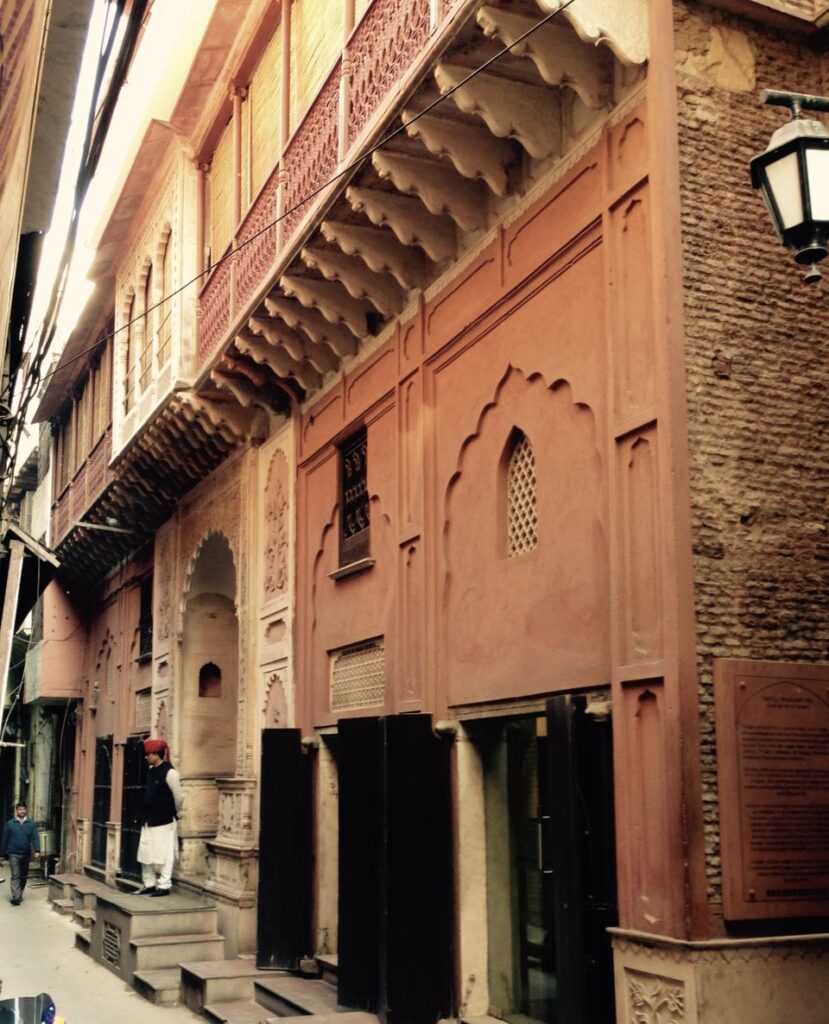
Vrindavan
Vrindavan is a site of Hindu architectural creations in Uttar Pradesh. Most of the temples were constructed under the reign of Mughal Emperor Akbar, so there is a combination of both Islamic elements and Hindu elements, that crept into the architecture of these temples.
Govinda Deva Temple of Vrindavan does not have a shikhara over the mandapa, as it was allegedly destroyed by Aurangzeb.
Jagat Kishore and Madan Mohan temples are other Hindu architecture temples of Vrindavan.
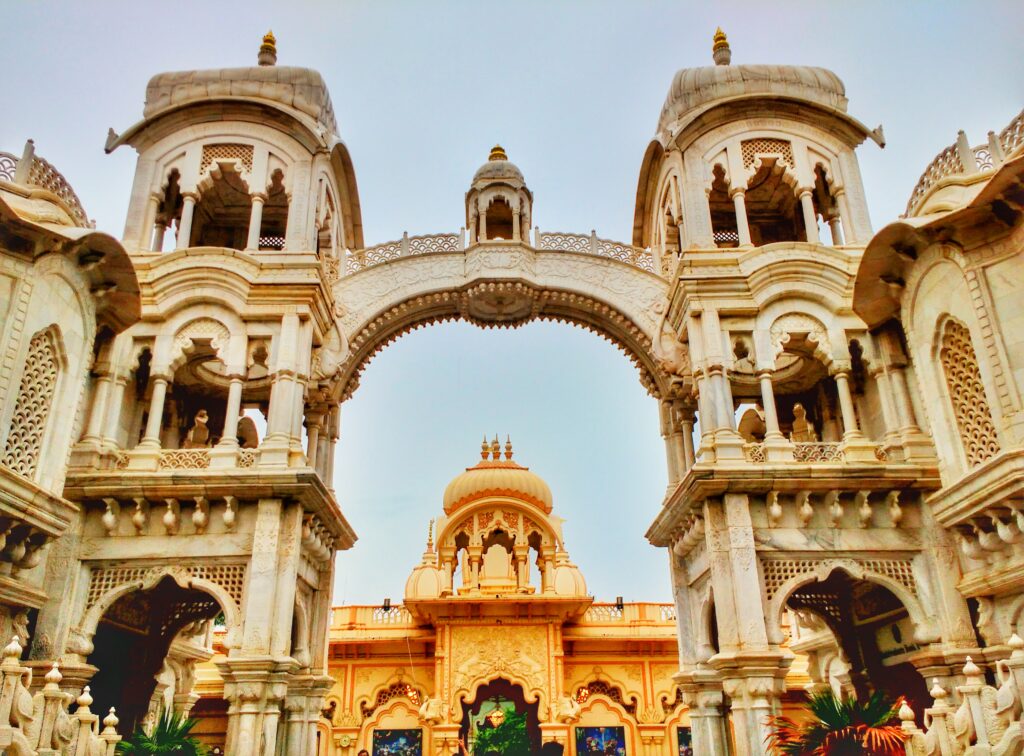
Traditional Dwellings in Uttar Pradesh
We will be considering the example of Muzaffarnagar to discuss the traditional dwellings of Uttar Pradesh. The city is an agricultural marketplace. The size and form of the buildings here are primarily influenced by the climate. The streets are narrow and have buildings on both sides. The houses have an open courtyard in the center. Cross ventilation is kept at high priority. Ornamentation is not there. And the houses are provided with chimneys. Niches are used for storage purposes. Verandah helps to enhance the cross ventilation of the houses.
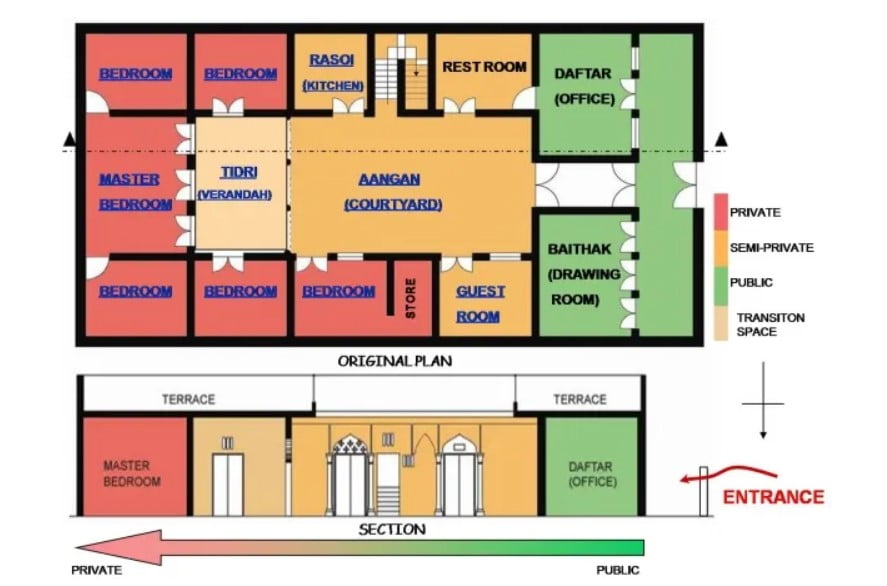
Conclusion
The different architectural styles of Uttar Pradesh represent the cultural amalgamation and assimilation that took place throughout the years, starting from the pre-Buddhist era. The architecture of Uttar Pradesh is a concrete and clear depiction of the cultural and historical development that took place in the state.
Citations
- Wikipedia. (2022). Architecture in Uttar Pradesh. [online] Available at: https://en.wikipedia.org/wiki/Architecture_of_Uttar_Pradesh#:~:text=The%20architectural%20structures%20in%20Uttar,Hindu%20temples%2C%20Ghats%2C%20etc.
- Uttarpradesh.pscnotes.com. (2022). History and Culture of Uttar Pradesh. [online] Available at: https://uttarpradesh.pscnotes.com/history-and-culture-of-uttarpradesh/
- Indianetzone.com. (2022). Architecture in Uttar Pradesh. [online] Available at: https://www.indianetzone.com/43/architecture_uttar_pradesh.htm
- Jain, Mamta. (n.d.). Architecture of Indian Cities: Varanasi- Beyond being the spiritual Capital of India. [online] Available at: https://www.re-thinkingthefuture.com/city-and-architecture/a2610-architecture-of-indian-cities-varanasi-beyond-being-the-spiritual-capital-of-india__trashed/
- Bhambri, Vibhuti. (n.d.). Architecture of Indian Cities Meerut Beyond being the Sports Capital of India. [online] Available at: https://www.re-thinkingthefuture.com/city-and-architecture/a3792-architecture-of-indian-cities-meerut-beyond-being-the-sports-capital-of-india/
- Archinomy.com. (n.d.). Traditional Dwellings in Uttar Pradesh (Muzaffarnagar). [online] Available at: https://www.archinomy.com/case-studies/traditional-dwelling-in-uttar-pradesh-muzaffarnagar/
![]()